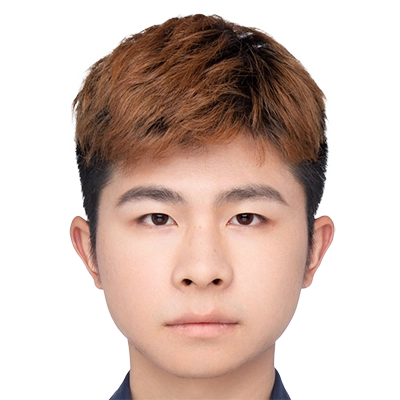Research Group Volker Tresp
Volker Tresp
is Guest Professor for Machine Learning at the Database Systems and Data Mining AI Lab at LMU Munich.
His team has a long-standing tradition in machine learning for relational structured domains. They particularly focus on (temporal) knowledge graphs and are currently investigating synergies with large language models. Driven by the interest in cognitive AI, they are increasingly exploring multimodal foundation models. The ultimate goal is to achieve a better understanding of human-level intelligence.
Team members @MCML
PostDocs
PhD Students
Recent News @MCML
Publications @MCML
2026
[140]

H. Chen • J. Li • Y. Zhang • J. Bi • Y. Xia • J. Gu • V. Tresp
AUVIC: Adversarial Unlearning of Visual Concepts for Multi-modal Large Language Models.
AAAI 2026 - 40th Conference on Artificial Intelligence. Singapore, Jan 20-27, 2026. To be published. Preprint available. arXiv
AUVIC: Adversarial Unlearning of Visual Concepts for Multi-modal Large Language Models.
AAAI 2026 - 40th Conference on Artificial Intelligence. Singapore, Jan 20-27, 2026. To be published. Preprint available. arXiv
[139]

N. Walha • S. G. Gruber • T. Decker • Y. Yang • A. Javanmardi • E. Hüllermeier • F. Buettner
Fine-Grained Uncertainty Decomposition in Large Language Models: A Spectral Approach.
AAAI 2026 - 40th Conference on Artificial Intelligence. Singapore, Jan 20-27, 2026. To be published. Preprint available. arXiv
Fine-Grained Uncertainty Decomposition in Large Language Models: A Spectral Approach.
AAAI 2026 - 40th Conference on Artificial Intelligence. Singapore, Jan 20-27, 2026. To be published. Preprint available. arXiv
[138]
Y. Zhang • S. Tang • Z. Li • Z. Han • V. Tresp
WebArbiter: A Principle-Guided Reasoning Process Reward Model for Web Agents.
LaMAS @AAAI 2026 - Workshop on LLM-based Multi-Agent Systems: Towards Responsible, Reliable, and Scalable Agentic Systems at the 40th Conference on Artificial Intelligence. Singapore, Jan 20-27, 2026. To be published.
WebArbiter: A Principle-Guided Reasoning Process Reward Model for Web Agents.
LaMAS @AAAI 2026 - Workshop on LLM-based Multi-Agent Systems: Towards Responsible, Reliable, and Scalable Agentic Systems at the 40th Conference on Artificial Intelligence. Singapore, Jan 20-27, 2026. To be published.
[137]
T. Decker • V. Tresp
Towards Quantifying Incompatibilities in Evaluation Metrics for Feature Attributions.
XAI4Science @AAAI 2026 - 2nd Workshop XAI4Science: From Understanding Model Behavior to Discovering New Scientific Knowledge at the 40th Conference on Artificial Intelligence. Singapore, Jan 20-27, 2026. To be published. Preprint available. URL
Towards Quantifying Incompatibilities in Evaluation Metrics for Feature Attributions.
XAI4Science @AAAI 2026 - 2nd Workshop XAI4Science: From Understanding Model Behavior to Discovering New Scientific Knowledge at the 40th Conference on Artificial Intelligence. Singapore, Jan 20-27, 2026. To be published. Preprint available. URL
2025
[136]
Z. Cai • W. Hua • K. Li • Y. Ma • E. Nie • H. Schütze • K. Stanczak • M. E. Taylor
ICLR 2026 Workshop on Memory for LLM-Based Agentic Systems (MemAgents).
Preprint (Dec. 2025). URL
ICLR 2026 Workshop on Memory for LLM-Based Agentic Systems (MemAgents).
Preprint (Dec. 2025). URL
[135]
H. Chen • Y. Zhang • Y. Bi • Y. Zhang • T. Liu • J. Bi • J. Lan • C. Grosser • D. Krompaß • J. Gu • N. Navab • V. Tresp
Does Machine Unlearning Truly Remove Knowledge?
Lock-LLM @NeurIPS 2025 - Lock-LLM Workshop: Prevent Unauthorized Knowledge Use from Large Language Models at the 39th Conference on Neural Information Processing Systems. San Diego, CA, USA, Nov 30-Dec 07, 2025. To be published. Preprint available. URL
Does Machine Unlearning Truly Remove Knowledge?
Lock-LLM @NeurIPS 2025 - Lock-LLM Workshop: Prevent Unauthorized Knowledge Use from Large Language Models at the 39th Conference on Neural Information Processing Systems. San Diego, CA, USA, Nov 30-Dec 07, 2025. To be published. Preprint available. URL
[134]

T. Decker • V. Tresp • F. Buettner
Improving Perturbation-based Explanations by Understanding the Role of Uncertainty Calibration.
NeurIPS 2025 - 39th Conference on Neural Information Processing Systems. San Diego, CA, USA, Nov 30-Dec 07, 2025. Spotlight Presentation. To be published. Preprint available. URL
Improving Perturbation-based Explanations by Understanding the Role of Uncertainty Calibration.
NeurIPS 2025 - 39th Conference on Neural Information Processing Systems. San Diego, CA, USA, Nov 30-Dec 07, 2025. Spotlight Presentation. To be published. Preprint available. URL
[133]
S. Chen • Z. Li • Z. Han • B. He • T. Liu • H. Chen • G. Groh • P. Torr • V. Tresp • J. Gu
Deep Research Brings Deeper Harm.
ReliableML @NeurIPS 2025 - Workshop on Reliable ML from Unreliable Data at the 39th Conference on Neural Information Processing Systems. San Diego, CA, USA, Nov 30-Dec 07, 2025. To be published. Preprint available. arXiv GitHub
Deep Research Brings Deeper Harm.
ReliableML @NeurIPS 2025 - Workshop on Reliable ML from Unreliable Data at the 39th Conference on Neural Information Processing Systems. San Diego, CA, USA, Nov 30-Dec 07, 2025. To be published. Preprint available. arXiv GitHub
[132]
Y. Zhang • Y. Wu • H. Zhang • W. Li • H. Chen • G. Li • Z. Han • V. Tresp
GroundedPRM: Tree-Guided and Fidelity-Aware Process Reward Modeling for Step-Level Reasoning.
SEA @NeurIPS 2025 - Workshop on Scaling Environments for Agents at the 39th Conference on Neural Information Processing Systems. San Diego, CA, USA, Nov 30-Dec 07, 2025. To be published. Preprint available. URL
GroundedPRM: Tree-Guided and Fidelity-Aware Process Reward Modeling for Step-Level Reasoning.
SEA @NeurIPS 2025 - Workshop on Scaling Environments for Agents at the 39th Conference on Neural Information Processing Systems. San Diego, CA, USA, Nov 30-Dec 07, 2025. To be published. Preprint available. URL
[131]

F. Liu • R. Zhao • S. Chen • G. Li • P. Torr • L. Han • J. Gu
Can an Individual Manipulate the Collective Decisions of Multi-Agents?
EMNLP 2025 - Conference on Empirical Methods in Natural Language Processing. Suzhou, China, Nov 04-09, 2025. DOI
Can an Individual Manipulate the Collective Decisions of Multi-Agents?
EMNLP 2025 - Conference on Empirical Methods in Natural Language Processing. Suzhou, China, Nov 04-09, 2025. DOI
[130]

Z. S. Taghavi • A. Modarressi • Y. Ma • H. Schütze
ImpliRet: Benchmarking the Implicit Fact Retrieval Challenge.
EMNLP 2025 - Conference on Empirical Methods in Natural Language Processing. Suzhou, China, Nov 04-09, 2025. DOI GitHub
ImpliRet: Benchmarking the Implicit Fact Retrieval Challenge.
EMNLP 2025 - Conference on Empirical Methods in Natural Language Processing. Suzhou, China, Nov 04-09, 2025. DOI GitHub
[129]

M. Wang • S. Chen • K. Kersting • V. Tresp • Y. Ma
METok: Multi-Stage Event-based Token Compression for Efficient Long Video Understanding.
EMNLP 2025 - Conference on Empirical Methods in Natural Language Processing. Suzhou, China, Nov 04-09, 2025. DOI
METok: Multi-Stage Event-based Token Compression for Efficient Long Video Understanding.
EMNLP 2025 - Conference on Empirical Methods in Natural Language Processing. Suzhou, China, Nov 04-09, 2025. DOI
[128]

M. Wang • L. Lange • H. Adel • Y. Ma • J. Strötgen • H. Schütze
Language Mixing in Reasoning Language Models: Patterns, Impact, and Internal Causes.
EMNLP 2025 - Conference on Empirical Methods in Natural Language Processing. Suzhou, China, Nov 04-09, 2025. DOI
Language Mixing in Reasoning Language Models: Patterns, Impact, and Internal Causes.
EMNLP 2025 - Conference on Empirical Methods in Natural Language Processing. Suzhou, China, Nov 04-09, 2025. DOI
[127]

Y. Zhang • C. Lin • S. Tang • H. Chen • S. Zhou • Y. Ma • V. Tresp
SwarmAgentic: Towards Fully Automated Agentic System Generation via Swarm Intelligence.
EMNLP 2025 - Conference on Empirical Methods in Natural Language Processing. Suzhou, China, Nov 04-09, 2025. DOI GitHub
SwarmAgentic: Towards Fully Automated Agentic System Generation via Swarm Intelligence.
EMNLP 2025 - Conference on Empirical Methods in Natural Language Processing. Suzhou, China, Nov 04-09, 2025. DOI GitHub
[126]
H. Chen • S. Szyller • W. Xu • N. Himayat
Soft Token Attacks Cannot Reliably Audit Unlearning in Large Language Models.
Findings @EMNLP 2025 - Findings of the Conference on Empirical Methods in Natural Language Processing. Suzhou, China, Nov 04-09, 2025. DOI GitHub
Soft Token Attacks Cannot Reliably Audit Unlearning in Large Language Models.
Findings @EMNLP 2025 - Findings of the Conference on Empirical Methods in Natural Language Processing. Suzhou, China, Nov 04-09, 2025. DOI GitHub
[125]
A. Wang • D. Shu • Y. Wang • Y. Ma • M. Du
Improving LLM Reasoning through Interpretable Role-Playing Steering.
Findings @EMNLP 2025 - Findings of the Conference on Empirical Methods in Natural Language Processing. Suzhou, China, Nov 04-09, 2025. DOI
Improving LLM Reasoning through Interpretable Role-Playing Steering.
Findings @EMNLP 2025 - Findings of the Conference on Empirical Methods in Natural Language Processing. Suzhou, China, Nov 04-09, 2025. DOI
[124]
G. Zhang • M. Ding • J. Wu • R. Liao • V. Tresp
ReEXplore: Improving MLLMs for Embodied Exploration with Contextualized Retrospective Experience Replay.
Preprint (Nov. 2025). arXiv
ReEXplore: Improving MLLMs for Embodied Exploration with Contextualized Retrospective Experience Replay.
Preprint (Nov. 2025). arXiv
[123]
H. Chen
Addressing data heterogeneity, scarcity, and training efficiency in privacy-preserving federated learning.
Dissertation LMU München. Oct. 2025. DOI
Addressing data heterogeneity, scarcity, and training efficiency in privacy-preserving federated learning.
Dissertation LMU München. Oct. 2025. DOI
[122]
R. Liao • G. Huang • Q. Cheng • T. Seidl • D. Cremers • V. Tresp
When and Where do Events Switch in Multi-Event Video Generation?
LongVid-Foundations @ICCV 2025 - 1st Workshop on Long Multi-Scene Video Foundations: Generation, Understanding and Evaluation at the IEEE/CVF International Conference on Computer Vision. Honolulu, Hawai’i, Oct 19-23, 2025. To be published. Preprint available. arXiv
When and Where do Events Switch in Multi-Event Video Generation?
LongVid-Foundations @ICCV 2025 - 1st Workshop on Long Multi-Scene Video Foundations: Generation, Understanding and Evaluation at the IEEE/CVF International Conference on Computer Vision. Honolulu, Hawai’i, Oct 19-23, 2025. To be published. Preprint available. arXiv
[121]
S. Chen • J. Liu • Z. Han • Y. Xia • D. Cremers • P. Torr • V. Tresp • J. Gu
True Multimodal In-Context Learning Needs Attention to the Visual Context.
COLM 2025 - Conference on Language Modeling. Montreal, Canada, Oct 07-09, 2025. URL GitHub
True Multimodal In-Context Learning Needs Attention to the Visual Context.
COLM 2025 - Conference on Language Modeling. Montreal, Canada, Oct 07-09, 2025. URL GitHub
[120]
S. Chen • Z. Han • H. Chen • B. He • S. Si • J. Wu • P. Torr • V. Tresp • J. Gu
Bag of Tricks for Subverting Reasoning-based Safety Guardrails.
Preprint (Oct. 2025). arXiv GitHub
Bag of Tricks for Subverting Reasoning-based Safety Guardrails.
Preprint (Oct. 2025). arXiv GitHub
[119]
T. Hannan • S. Wu • M. Weber • S. Shit • J. Gu • R. Koner • A. Ošep • L. Leal-Taixé • T. Seidl
SVAG-Bench: A Large-Scale Benchmark for Multi-Instance Spatio-temporal Video Action Grounding.
Preprint (Oct. 2025). arXiv
SVAG-Bench: A Large-Scale Benchmark for Multi-Instance Spatio-temporal Video Action Grounding.
Preprint (Oct. 2025). arXiv
[118]
A. Wang • X. Wu • D. Shu • Y. Ma • N. Liu
Enhancing LLM Steering through Sparse Autoencoder-Based Vector Refinement.
Preprint (Sep. 2025). arXiv
Enhancing LLM Steering through Sparse Autoencoder-Based Vector Refinement.
Preprint (Sep. 2025). arXiv
[117]
Y. Sun • M. Hagog • M. Weber • D. Hein • S. Udluft • V. Tresp • Y. Ma
First Experience with Real-Time Control Using Simulated VQC-Based Quantum Policies.
QCE 2025 - IEEE International Conference on Quantum Computing and Engineering. Albuquerque, NM, USA, Aug 31-Sep 05, 2025. To be published. Preprint available. arXiv
First Experience with Real-Time Control Using Simulated VQC-Based Quantum Policies.
QCE 2025 - IEEE International Conference on Quantum Computing and Engineering. Albuquerque, NM, USA, Aug 31-Sep 05, 2025. To be published. Preprint available. arXiv
[116]
Z. Ding • Y. Li • Y. He • A. Norelli • J. Wu • V. Tresp • Y. Ma • M. Bronstein
DyGMamba: Efficiently Modeling Long-Term Temporal Dependency on Continuous-Time Dynamic Graphs with State Space Models.
TGL @KDD 2025 - Temporal Graph Learning Workshopat the 31st ACM SIGKDD International Conference on Knowledge Discovery and Data Mining. Toronto, ON, Canada, Aug 03-07, 2025. URL
DyGMamba: Efficiently Modeling Long-Term Temporal Dependency on Continuous-Time Dynamic Graphs with State Space Models.
TGL @KDD 2025 - Temporal Graph Learning Workshopat the 31st ACM SIGKDD International Conference on Knowledge Discovery and Data Mining. Toronto, ON, Canada, Aug 03-07, 2025. URL
[115]
R. Lu • J. Bi • Y. Ma • F. Xiao • Y. Du • Y. Tian
MV-Debate: Multi-view Agent Debate with Dynamic Reflection Gating for Multimodal Harmful Content Detection in Social Media.
Preprint (Aug. 2025). arXiv
MV-Debate: Multi-view Agent Debate with Dynamic Reflection Gating for Multimodal Harmful Content Detection in Social Media.
Preprint (Aug. 2025). arXiv
[114]

J. Bi • Y. Wang • H. Chen • X. Xiao • A. Hecker • V. Tresp • Y. Ma
LLaVA Steering: Visual Instruction Tuning with 500x Fewer Parameters through Modality Linear Representation-Steering.
ACL 2025 - 63rd Annual Meeting of the Association for Computational Linguistics. Vienna, Austria, Jul 27-Aug 01, 2025. DOI
LLaVA Steering: Visual Instruction Tuning with 500x Fewer Parameters through Modality Linear Representation-Steering.
ACL 2025 - 63rd Annual Meeting of the Association for Computational Linguistics. Vienna, Austria, Jul 27-Aug 01, 2025. DOI
[113]

T. Liu • Z. Lai • J. Wang • G. Zhang • S. Chen • P. Torr • V. Demberg • V. Tresp • J. Gu
Multimodal Pragmatic Jailbreak on Text-to-image Models.
ACL 2025 - 63rd Annual Meeting of the Association for Computational Linguistics. Vienna, Austria, Jul 27-Aug 01, 2025. DOI GitHub
Multimodal Pragmatic Jailbreak on Text-to-image Models.
ACL 2025 - 63rd Annual Meeting of the Association for Computational Linguistics. Vienna, Austria, Jul 27-Aug 01, 2025. DOI GitHub
[112]

T. Liu • X. Yu • W. Zhou • J. Gu • V. Tresp
FocalPO: Enhancing Preference Optimizing by Focusing on Correct Preference Rankings.
ACL 2025 - 63rd Annual Meeting of the Association for Computational Linguistics. Vienna, Austria, Jul 27-Aug 01, 2025. DOI
FocalPO: Enhancing Preference Optimizing by Focusing on Correct Preference Rankings.
ACL 2025 - 63rd Annual Meeting of the Association for Computational Linguistics. Vienna, Austria, Jul 27-Aug 01, 2025. DOI
[111]

E. Nie • B. Shao • Z. Ding • M. Wang • H. Schmid • H. Schütze
BMIKE-53: Investigating Cross-Lingual Knowledge Editing with In-Context Learning.
ACL 2025 - 63rd Annual Meeting of the Association for Computational Linguistics. Vienna, Austria, Jul 27-Aug 01, 2025. DOI GitHub
BMIKE-53: Investigating Cross-Lingual Knowledge Editing with In-Context Learning.
ACL 2025 - 63rd Annual Meeting of the Association for Computational Linguistics. Vienna, Austria, Jul 27-Aug 01, 2025. DOI GitHub
[110]

T. Liu • Z. Lai • J. Wang • G. Zhang • S. Chen • P. Torr • V. Demberg • V. Tresp • J. Gu
Multimodal Pragmatic Jailbreak on Text-to-image Models.
CVPR 2025 - 2nd Workshop on Responsible Generative AI at IEEE/CVF Conference on Computer Vision and Pattern Recognition. Nashville, TN, USA, Jun 11-15, 2025. Best Paper Award. URL GitHub
Multimodal Pragmatic Jailbreak on Text-to-image Models.
CVPR 2025 - 2nd Workshop on Responsible Generative AI at IEEE/CVF Conference on Computer Vision and Pattern Recognition. Nashville, TN, USA, Jun 11-15, 2025. Best Paper Award. URL GitHub
[109]

H. Chen • H. Li • Y. Zhang • G. Zhang • J. Bi • P. Torr • J. Gu • D. Krompass • V. Tresp
FedBiP: Heterogeneous One-Shot Federated Learning with Personalized Latent Diffusion Models.
CVPR 2025 - IEEE/CVF Conference on Computer Vision and Pattern Recognition. Nashville, TN, USA, Jun 11-15, 2025. DOI
FedBiP: Heterogeneous One-Shot Federated Learning with Personalized Latent Diffusion Models.
CVPR 2025 - IEEE/CVF Conference on Computer Vision and Pattern Recognition. Nashville, TN, USA, Jun 11-15, 2025. DOI
[108]

G. Zhang • M. L. A. Fok • J. Ma • Y. Xia • D. Cremers • P. Torr • V. Tresp • J. Gu
Localizing Events in Videos with Multimodal Queries.
CVPR 2025 - IEEE/CVF Conference on Computer Vision and Pattern Recognition. Nashville, TN, USA, Jun 11-15, 2025. DOI
Localizing Events in Videos with Multimodal Queries.
CVPR 2025 - IEEE/CVF Conference on Computer Vision and Pattern Recognition. Nashville, TN, USA, Jun 11-15, 2025. DOI
[107]
X. Ma • C. Lin • Y. Zhang • V. Tresp • Y. Ma
Agentic Neural Networks: Self-Evolving Multi-Agent Systems via Textual Backpropagation.
Preprint (Jun. 2025). arXiv
Agentic Neural Networks: Self-Evolving Multi-Agent Systems via Textual Backpropagation.
Preprint (Jun. 2025). arXiv
[106]
Y. Wang • Aniri • J. Bi • S. Pirk • Y. Ma
ASCD: Attention-Steerable Contrastive Decoding for Reducing Hallucination in MLLM.
Preprint (Jun. 2025). arXiv
ASCD: Attention-Steerable Contrastive Decoding for Reducing Hallucination in MLLM.
Preprint (Jun. 2025). arXiv
[105]
G. Zhang • T. Hannan • H. Kleiner • B. Aydemir • X. Xie • J. Lan • T. Seidl • V. Tresp • J. Gu
AViLA: Asynchronous Vision-Language Agent for Streaming Multimodal Data Interaction.
Preprint (Jun. 2025). arXiv
AViLA: Asynchronous Vision-Language Agent for Streaming Multimodal Data Interaction.
Preprint (Jun. 2025). arXiv
[104]
Y. Zhang • H. Gao • H. Chen • W. Li • Y. Ma • V. Tresp
FedNano: Toward Lightweight Federated Tuning for Pretrained Multimodal Large Language Models.
Preprint (Jun. 2025). arXiv
FedNano: Toward Lightweight Federated Tuning for Pretrained Multimodal Large Language Models.
Preprint (Jun. 2025). arXiv
[103]

A. Koebler • T. Decker • I. Thon • V. Tresp • F. Buettner
Incremental Uncertainty-aware Performance Monitoring with Active Labeling Intervention.
AISTATS 2025 - 28th International Conference on Artificial Intelligence and Statistics. Mai Khao, Thailand, May 03-05, 2025. URL
Incremental Uncertainty-aware Performance Monitoring with Active Labeling Intervention.
AISTATS 2025 - 28th International Conference on Artificial Intelligence and Statistics. Mai Khao, Thailand, May 03-05, 2025. URL
[102]
J. Bi • D. Yan • Y. Wang • W. Huang • H. Chen • G. Wan • M. Ye • X. Xiao • H. Schütze • V. Tresp • Y. Ma
CoT-Kinetics: A Theoretical Modeling Assessing LRM Reasoning Process.
Preprint (May. 2025). arXiv
CoT-Kinetics: A Theoretical Modeling Assessing LRM Reasoning Process.
Preprint (May. 2025). arXiv
[101]
J. Lan • Y. Fu • U. Schlegel • G. Zhang • T. Hannan • H. Chen • T. Seidl
My Answer Is NOT 'Fair': Mitigating Social Bias in Vision-Language Models via Fair and Biased Residuals.
Preprint (May. 2025). arXiv
My Answer Is NOT 'Fair': Mitigating Social Bias in Vision-Language Models via Fair and Biased Residuals.
Preprint (May. 2025). arXiv
[100]
Z. Li • S. Yan • Y. Ma • Y. Li • X. Lyu • M. Schubert
Beyond Single-Step: Multi-Frame Action-Conditiones Video Generation for Reinforcement Learning Environments.
World Models @ICLR 2025 - Workshop on World Models: Understanding, Modelling and Scaling at the 13th International Conference on Learning Representations. Singapore, Apr 24-28, 2025. URL
Beyond Single-Step: Multi-Frame Action-Conditiones Video Generation for Reinforcement Learning Environments.
World Models @ICLR 2025 - Workshop on World Models: Understanding, Modelling and Scaling at the 13th International Conference on Learning Representations. Singapore, Apr 24-28, 2025. URL
[99]
T. Decker • V. Tresp • F. Buettner
Why Uncertainty Calibration Matters for Reliable Perturbation-based Explanations.
XAI4Science @ICLR 2025 - Workshop XAI4Science: From Understanding Model Behavior to Discovering New Scientific Knowledge at the 13th International Conference on Learning Representations. Singapore, Apr 24-28, 2025. URL
Why Uncertainty Calibration Matters for Reliable Perturbation-based Explanations.
XAI4Science @ICLR 2025 - Workshop XAI4Science: From Understanding Model Behavior to Discovering New Scientific Knowledge at the 13th International Conference on Learning Representations. Singapore, Apr 24-28, 2025. URL
[98]
Z. Ding
Inductive representation learning and natural language question answering on temporal knowledge graphs.
Dissertation LMU München. Apr. 2025. DOI
Inductive representation learning and natural language question answering on temporal knowledge graphs.
Dissertation LMU München. Apr. 2025. DOI
[97]
G. Zhai • E. P. Örnek • D. Z. Chen • R. Liao • Y. Di • N. Navab • F. Tombari • B. Busam
EchoScene: Indoor Scene Generation via Information Echo over Scene Graph Diffusion.
Nectar Track @3DV 2025 - Nectar Track at the 12th International Conference on 3D Vision. Singapore, Mar 25-28, 2025. arXiv
EchoScene: Indoor Scene Generation via Information Echo over Scene Graph Diffusion.
Nectar Track @3DV 2025 - Nectar Track at the 12th International Conference on 3D Vision. Singapore, Mar 25-28, 2025. arXiv
[96]

R. Amoroso • G. Zhang • R. Koner • L. Baraldi • R. Cucchiara • V. Tresp
Perceive, Query & Reason: Enhancing Video QA with Question-Guided Temporal Queries.
WACV 2025 - IEEE/CVF Winter Conference on Applications of Computer Vision. Tucson, AZ, USA, Feb 28-Mar 04, 2025. DOI
Perceive, Query & Reason: Enhancing Video QA with Question-Guided Temporal Queries.
WACV 2025 - IEEE/CVF Winter Conference on Applications of Computer Vision. Tucson, AZ, USA, Feb 28-Mar 04, 2025. DOI
[95]

S. Chen • Z. Han • B. He • J. Liu • M. Buckley • Y. Qin • P. Torr • V. Tresp • J. Gu
Can Multimodal Large Language Models Truly Perform Multimodal In-Context Learning?
WACV 2025 - IEEE/CVF Winter Conference on Applications of Computer Vision. Tucson, AZ, USA, Feb 28-Mar 04, 2025. DOI URL
Can Multimodal Large Language Models Truly Perform Multimodal In-Context Learning?
WACV 2025 - IEEE/CVF Winter Conference on Applications of Computer Vision. Tucson, AZ, USA, Feb 28-Mar 04, 2025. DOI URL
[94]

Y. Zhang • H. Chen • A. Frikha • Y. Yang • D. Krompass • G. Zhang • J. Gu • V. Tresp
CL-Cross VQA: A Continual Learning Benchmark for Cross-Domain Visual Question Answering.
WACV 2025 - IEEE/CVF Winter Conference on Applications of Computer Vision. Tucson, AZ, USA, Feb 28-Mar 04, 2025. DOI
CL-Cross VQA: A Continual Learning Benchmark for Cross-Domain Visual Question Answering.
WACV 2025 - IEEE/CVF Winter Conference on Applications of Computer Vision. Tucson, AZ, USA, Feb 28-Mar 04, 2025. DOI
[93]

H. Chen • D. Krompass • J. Gu • V. Tresp
FedPop: Federated Population-based Hyperparameter Tuning.
AAAI 2025 - 39th Conference on Artificial Intelligence. Philadelphia, PA, USA, Feb 25-Mar 04, 2025. DOI
FedPop: Federated Population-based Hyperparameter Tuning.
AAAI 2025 - 39th Conference on Artificial Intelligence. Philadelphia, PA, USA, Feb 25-Mar 04, 2025. DOI
[92]

Y. Zhang • Z. Ma • Y. Ma • Z. Han • Y. Wu • V. Tresp
WebPilot: A Versatile and Autonomous Multi-Agent System for Web Task Execution with Strategic Exploration.
AAAI 2025 - 39th Conference on Artificial Intelligence. Philadelphia, PA, USA, Feb 25-Mar 04, 2025. DOI
WebPilot: A Versatile and Autonomous Multi-Agent System for Web Task Execution with Strategic Exploration.
AAAI 2025 - 39th Conference on Artificial Intelligence. Philadelphia, PA, USA, Feb 25-Mar 04, 2025. DOI
[91]
J. Bi • Y. Wang • D. Yan • Aniri • W. Huang • Z. Jin • X. Ma • A. Hecker • M. Ye • X. Xiao • H. Schütze • V. Tresp • Y. Ma
PRISM: Self-Pruning Intrinsic Selection Method for Training-Free Multimodal Data Selection.
Preprint (Feb. 2025). arXiv GitHub
PRISM: Self-Pruning Intrinsic Selection Method for Training-Free Multimodal Data Selection.
Preprint (Feb. 2025). arXiv GitHub
[90]
G. Zhang • M. Ding • T. Liu • Y. Zhang • V. Tresp
Memory Helps, but Confabulation Misleads: Understanding Streaming Events in Videos with MLLMs.
Preprint (Feb. 2025). arXiv
Memory Helps, but Confabulation Misleads: Understanding Streaming Events in Videos with MLLMs.
Preprint (Feb. 2025). arXiv
2024
[89]
A. Koebler • T. Decker • I. Thon • V. Tresp • F. Buettner
Incremental Uncertainty-aware Performance Monitoring with Labeling Intervention.
BDU @NeurIPS 2024 - Workshop Bayesian Decision-making and Uncertainty: from probabilistic and spatiotemporal modeling to sequential experiment design at the 38th Conference on Neural Information Processing Systems. Vancouver, Canada, Dec 10-15, 2024. URL
Incremental Uncertainty-aware Performance Monitoring with Labeling Intervention.
BDU @NeurIPS 2024 - Workshop Bayesian Decision-making and Uncertainty: from probabilistic and spatiotemporal modeling to sequential experiment design at the 38th Conference on Neural Information Processing Systems. Vancouver, Canada, Dec 10-15, 2024. URL
[88]
T. Hannan • R. Koner • M. Bernhard • S. Shit • B. Menze • V. Tresp • M. Schubert • T. Seidl
GRAtt-VIS: Gated Residual Attention for Video Instance Segmentation.
ICPR 2020 - 27th International Conference on Pattern Recognition. Kolkata, India, Dec 01-05, 2024. DOI GitHub
GRAtt-VIS: Gated Residual Attention for Video Instance Segmentation.
ICPR 2020 - 27th International Conference on Pattern Recognition. Kolkata, India, Dec 01-05, 2024. DOI GitHub
[87]

Y. Liu • Y. Zhang • Q. Li • T. Liu • S. Feng • D. Wang • Y. Zhang • H. Schütze
HiFT: A Hierarchical Full Parameter Fine-Tuning Strategy.
EMNLP 2024 - Conference on Empirical Methods in Natural Language Processing. Miami, FL, USA, Nov 12-16, 2024. DOI
HiFT: A Hierarchical Full Parameter Fine-Tuning Strategy.
EMNLP 2024 - Conference on Empirical Methods in Natural Language Processing. Miami, FL, USA, Nov 12-16, 2024. DOI
[86]
Z. Ding • J. Wu • J. Wu • Y. Xia • V. Tresp
Temporal Fact Reasoning over Hyper-Relational Knowledge Graphs.
Findings @EMNLP 2024 - Findings of the Conference on Empirical Methods in Natural Language Processing. Miami, FL, USA, Nov 12-16, 2024. DOI
Temporal Fact Reasoning over Hyper-Relational Knowledge Graphs.
Findings @EMNLP 2024 - Findings of the Conference on Empirical Methods in Natural Language Processing. Miami, FL, USA, Nov 12-16, 2024. DOI
[85]
R. Liao • M. Erler • H. Wang • G. Zhai • G. Zhang • Y. Ma • V. Tresp
VideoINSTA: Zero-shot Long Video Understanding via Informative Spatial-Temporal Reasoning with LLMs.
Findings @EMNLP 2024 - Findings of the Conference on Empirical Methods in Natural Language Processing. Miami, FL, USA, Nov 12-16, 2024. DOI GitHub
VideoINSTA: Zero-shot Long Video Understanding via Informative Spatial-Temporal Reasoning with LLMs.
Findings @EMNLP 2024 - Findings of the Conference on Empirical Methods in Natural Language Processing. Miami, FL, USA, Nov 12-16, 2024. DOI GitHub
[84]
H. Zhang • J. Liu • Z. Han • S. Chen • B. He • V. Tresp • Z. Xu • J. Gu
Visual Question Decomposition on Multimodal Large Language Models.
Findings @EMNLP 2024 - Findings of the Conference on Empirical Methods in Natural Language Processing. Miami, FL, USA, Nov 12-16, 2024. DOI
Visual Question Decomposition on Multimodal Large Language Models.
Findings @EMNLP 2024 - Findings of the Conference on Empirical Methods in Natural Language Processing. Miami, FL, USA, Nov 12-16, 2024. DOI
[83]
Y. Sun • Z. Wu • Y. Ma • V. Tresp
Quantum Architecture Search with Unsupervised Representation Learning.
Preprint (Oct. 2024). arXiv
Quantum Architecture Search with Unsupervised Representation Learning.
Preprint (Oct. 2024). arXiv
[82]

G. Zhai • E. P. Örnek • D. Z. Chen • R. Liao • Y. Di • N. Navab • F. Tombari • B. Busam
EchoScene: Indoor Scene Generation via Information Echo over Scene Graph Diffusion.
ECCV 2024 - 18th European Conference on Computer Vision. Milano, Italy, Sep 29-Oct 04, 2024. DOI
EchoScene: Indoor Scene Generation via Information Echo over Scene Graph Diffusion.
ECCV 2024 - 18th European Conference on Computer Vision. Milano, Italy, Sep 29-Oct 04, 2024. DOI
[81]

S. Gilhuber • A. Beer • Y. Ma • T. Seidl
FALCUN: A Simple and Efficient Deep Active Learning Strategy.
ECML-PKDD 2024 - European Conference on Machine Learning and Principles and Practice of Knowledge Discovery in Databases. Vilnius, Lithuania, Sep 09-13, 2024. DOI
FALCUN: A Simple and Efficient Deep Active Learning Strategy.
ECML-PKDD 2024 - European Conference on Machine Learning and Principles and Practice of Knowledge Discovery in Databases. Vilnius, Lithuania, Sep 09-13, 2024. DOI
[80]

Y. Liu • E. Nie • S. Feng • Z. Hua • Z. Ding • D. Wang • Y. Zhang • H. Schütze
A Unified Data Augmentation Framework for Low-Resource Multi-Domain Dialogue Generation.
ECML-PKDD 2024 - European Conference on Machine Learning and Principles and Practice of Knowledge Discovery in Databases. Vilnius, Lithuania, Sep 09-13, 2024. DOI GitHub
A Unified Data Augmentation Framework for Low-Resource Multi-Domain Dialogue Generation.
ECML-PKDD 2024 - European Conference on Machine Learning and Principles and Practice of Knowledge Discovery in Databases. Vilnius, Lithuania, Sep 09-13, 2024. DOI GitHub
[79]

T. Decker • A. Koebler • M. Lebacher • I. Thon • V. Tresp • F. Buettner
Explanatory Model Monitoring to Understand the Effects of Feature Shifts on Performance.
KDD 2024 - 30th ACM SIGKDD International Conference on Knowledge Discovery and Data Mining. Barcelona, Spain, Aug 25-29, 2024. DOI
Explanatory Model Monitoring to Understand the Effects of Feature Shifts on Performance.
KDD 2024 - 30th ACM SIGKDD International Conference on Knowledge Discovery and Data Mining. Barcelona, Spain, Aug 25-29, 2024. DOI
[78]

T. Liu • I. Škrjanec • V. Demberg
Temperature-scaling surprisal estimates improve fit to human reading times – but does it do so for the 'right reasons'?
ACL 2024 - 62nd Annual Meeting of the Association for Computational Linguistics. Bangkok, Thailand, Aug 11-16, 2024. DOI
Temperature-scaling surprisal estimates improve fit to human reading times – but does it do so for the 'right reasons'?
ACL 2024 - 62nd Annual Meeting of the Association for Computational Linguistics. Bangkok, Thailand, Aug 11-16, 2024. DOI
[77]
Y. Sun • J. Liu • Z. Wu • Z. Ding • Y. Ma • T. Seidl • V. Tresp
SA-DQAS: Self-attention Enhanced Differentiable Quantum Architecture Search.
Differentiable Almost Everything @ICML 2024 - Workshop Differentiable Almost Everything: Differentiable Relaxations, Algorithms, Operators, and Simulators at the 41st International Conference on Machine Learning. Vienna, Austria, Jul 21-27, 2024. PDF
SA-DQAS: Self-attention Enhanced Differentiable Quantum Architecture Search.
Differentiable Almost Everything @ICML 2024 - Workshop Differentiable Almost Everything: Differentiable Relaxations, Algorithms, Operators, and Simulators at the 41st International Conference on Machine Learning. Vienna, Austria, Jul 21-27, 2024. PDF
[76]

T. Decker • A. R. Bhattarai • J. Gu • V. Tresp • F. Buettner
Provably Better Explanations with Optimized Aggregation of Feature Attributions.
ICML 2024 - 41st International Conference on Machine Learning. Vienna, Austria, Jul 21-27, 2024. URL
Provably Better Explanations with Optimized Aggregation of Feature Attributions.
ICML 2024 - 41st International Conference on Machine Learning. Vienna, Austria, Jul 21-27, 2024. URL
[75]

H. Li • C. Shen • P. Torr • V. Tresp • J. Gu
Self-Discovering Interpretable Diffusion Latent Directions for Responsible Text-to-Image Generation.
CVPR 2024 - IEEE/CVF Conference on Computer Vision and Pattern Recognition. Seattle, WA, USA, Jun 17-21, 2024. DOI GitHub
Self-Discovering Interpretable Diffusion Latent Directions for Responsible Text-to-Image Generation.
CVPR 2024 - IEEE/CVF Conference on Computer Vision and Pattern Recognition. Seattle, WA, USA, Jun 17-21, 2024. DOI GitHub
[74]

Y. Xia • L. Shi • Z. Ding • J. F. Henriques • D. Cremers
Text2Loc: 3D Point Cloud Localization from Natural Language.
CVPR 2024 - IEEE/CVF Conference on Computer Vision and Pattern Recognition. Seattle, WA, USA, Jun 17-21, 2024. DOI GitHub
Text2Loc: 3D Point Cloud Localization from Natural Language.
CVPR 2024 - IEEE/CVF Conference on Computer Vision and Pattern Recognition. Seattle, WA, USA, Jun 17-21, 2024. DOI GitHub
[73]
R. Liao • X. Jia • Y. Li • Y. Ma • V. Tresp
GenTKG: Generative Forecasting on Temporal Knowledge Graph with Large Language Models.
Findings @NAACL 2024 - Findings of the Annual Conference of the North American Chapter of the Association for Computational Linguistics. Mexico City, Mexico, Jun 16-21, 2024. DOI GitHub
GenTKG: Generative Forecasting on Temporal Knowledge Graph with Large Language Models.
Findings @NAACL 2024 - Findings of the Annual Conference of the North American Chapter of the Association for Computational Linguistics. Mexico City, Mexico, Jun 16-21, 2024. DOI GitHub
[72]

Z. Ding • H. Cai • J. Wu • Y. Ma • R. Liao • B. Xiong • V. Tresp
zrLLM: Zero-Shot Relational Learning on Temporal Knowledge Graphs with Large Language Models.
NAACL 2024 - Annual Conference of the North American Chapter of the Association for Computational Linguistics. Mexico City, Mexico, Jun 16-21, 2024. DOI
zrLLM: Zero-Shot Relational Learning on Temporal Knowledge Graphs with Large Language Models.
NAACL 2024 - Annual Conference of the North American Chapter of the Association for Computational Linguistics. Mexico City, Mexico, Jun 16-21, 2024. DOI
[71]
Y. Han • Z. Ding • Y. Liu • B. He • V. Tresp
Critical Path Identification in Supply Chain Knowledge Graphs with Large Language Models.
ESWC 2024 - Extended Semantic Web Conference. Hersonissos, Crete, Greece, May 26-30, 2024. DOI
Critical Path Identification in Supply Chain Knowledge Graphs with Large Language Models.
ESWC 2024 - Extended Semantic Web Conference. Hersonissos, Crete, Greece, May 26-30, 2024. DOI
[70]
S. Chen • Z. Han • B. He • M. Buckley • P. Torr • V. Tresp • J. Gu
Understanding and Improving In-Context Learning on Vision-language Models.
ME-FoMo @ICLR 2024 - Workshop on Mathematical and Empirical Understanding of Foundation Models at the 12th International Conference on Learning Representations. Vienna, Austria, May 07-11, 2024. URL
Understanding and Improving In-Context Learning on Vision-language Models.
ME-FoMo @ICLR 2024 - Workshop on Mathematical and Empirical Understanding of Foundation Models at the 12th International Conference on Learning Representations. Vienna, Austria, May 07-11, 2024. URL
[69]
S. Chen • Z. Han • B. He • Z. Ding • W. Yu • P. Torr • V. Tresp • J. Gu
Red Teaming GPT-4V: Are GPT-4V Safe Against Uni/Multi-Modal Jailbreak Attacks?
SeT LLM @ICLR 2024 - Workshop on Secure and Trustworthy Large Language Models at the 12th International Conference on Learning Representations. Vienna, Austria, May 07-11, 2024. URL
Red Teaming GPT-4V: Are GPT-4V Safe Against Uni/Multi-Modal Jailbreak Attacks?
SeT LLM @ICLR 2024 - Workshop on Secure and Trustworthy Large Language Models at the 12th International Conference on Learning Representations. Vienna, Austria, May 07-11, 2024. URL
[68]

H. Chen • Y. Zhang • D. Krompass • J. Gu • V. Tresp
FedDAT: An Approach for Foundation Model Finetuning in Multi-Modal Heterogeneous Federated Learning.
AAAI 2024 - 38th Conference on Artificial Intelligence. Vancouver, Canada, Feb 20-27, 2024. DOI
FedDAT: An Approach for Foundation Model Finetuning in Multi-Modal Heterogeneous Federated Learning.
AAAI 2024 - 38th Conference on Artificial Intelligence. Vancouver, Canada, Feb 20-27, 2024. DOI
[67]

M. Bernhard • R. Amoroso • Y. Kindermann • M. Schubert • L. Baraldi • R. Cucchiara • V. Tresp
What's Outside the Intersection? Fine-grained Error Analysis for Semantic Segmentation Beyond IoU.
WACV 2024 - IEEE/CVF Winter Conference on Applications of Computer Vision. Waikoloa, Hawaii, Jan 04-08, 2024. DOI GitHub
What's Outside the Intersection? Fine-grained Error Analysis for Semantic Segmentation Beyond IoU.
WACV 2024 - IEEE/CVF Winter Conference on Applications of Computer Vision. Waikoloa, Hawaii, Jan 04-08, 2024. DOI GitHub
[66]

U. Sahin • H. Li • Q. Khan • D. Cremers • V. Tresp
Enhancing Multimodal Compositional Reasoning of Visual Language Models With Generative Negative Mining.
WACV 2024 - IEEE/CVF Winter Conference on Applications of Computer Vision. Waikoloa, Hawaii, Jan 04-08, 2024. DOI GitHub
Enhancing Multimodal Compositional Reasoning of Visual Language Models With Generative Negative Mining.
WACV 2024 - IEEE/CVF Winter Conference on Applications of Computer Vision. Waikoloa, Hawaii, Jan 04-08, 2024. DOI GitHub
[65]

G. Zhang • Y. Zhang • K. Zhang • V. Tresp
Can Vision-Language Models be a Good Guesser? Exploring VLMs for Times and Location Reasoning.
WACV 2024 - IEEE/CVF Winter Conference on Applications of Computer Vision. Waikoloa, Hawaii, Jan 04-08, 2024. DOI GitHub
Can Vision-Language Models be a Good Guesser? Exploring VLMs for Times and Location Reasoning.
WACV 2024 - IEEE/CVF Winter Conference on Applications of Computer Vision. Waikoloa, Hawaii, Jan 04-08, 2024. DOI GitHub
2023
[64]

S. Chen • J. Gu • Z. Han • Y. Ma • P. Torr • V. Tresp
Benchmarking Robustness of Adaptation Methods on Pre-trained Vision-Language Models.
NeurIPS 2023 - 37th Conference on Neural Information Processing Systems. New Orleans, LA, USA, Dec 10-16, 2023. URL GitHub
Benchmarking Robustness of Adaptation Methods on Pre-trained Vision-Language Models.
NeurIPS 2023 - 37th Conference on Neural Information Processing Systems. New Orleans, LA, USA, Dec 10-16, 2023. URL GitHub
[63]
R. Liao • X. Jia • Y. Ma • V. Tresp
GenTKG: Generative Forecasting on Temporal Knowledge Graph.
TGL 2023 @NeurIPS 2023 - Workshop Temporal Graph Learning at the 37th Conference on Neural Information Processing Systems. New Orleans, LA, USA, Dec 10-16, 2023. URL
GenTKG: Generative Forecasting on Temporal Knowledge Graph.
TGL 2023 @NeurIPS 2023 - Workshop Temporal Graph Learning at the 37th Conference on Neural Information Processing Systems. New Orleans, LA, USA, Dec 10-16, 2023. URL
[62]
A. Koebler • T. Decker • M. Lebacher • I. Thon • V. Tresp • F. Buettner
Towards Explanatory Model Monitoring.
XAIA 2023 @NeurIPS 2023 - Workshop XAI in Action: Past, Present, and Future Applications at the 37th Conference on Neural Information Processing Systems. New Orleans, LA, USA, Dec 10-16, 2023. URL
Towards Explanatory Model Monitoring.
XAIA 2023 @NeurIPS 2023 - Workshop XAI in Action: Past, Present, and Future Applications at the 37th Conference on Neural Information Processing Systems. New Orleans, LA, USA, Dec 10-16, 2023. URL
[61]
G. Zhang • J. Bi • J. Gu • Y. Chen • V. Tresp
SPOT! Revisiting Video-Language Models for Event Understanding.
Preprint (Dec. 2023). arXiv
SPOT! Revisiting Video-Language Models for Event Understanding.
Preprint (Dec. 2023). arXiv
[60]

Z. Ding • Z. Li • R. Qi • J. Wu • B. He • Y. Ma • Z. Meng • S. Chen • R. Liao • Z. Han • V. Tresp
FORECASTTKGQUESTIONS: A Benchmark for Temporal Question Answering and Forecasting over Temporal Knowledge Graphs.
ISWC 2023 - 22nd International Semantic Web Conference. Athens, Greeke, Nov 06-11, 2023. DOI
FORECASTTKGQUESTIONS: A Benchmark for Temporal Question Answering and Forecasting over Temporal Knowledge Graphs.
ISWC 2023 - 22nd International Semantic Web Conference. Athens, Greeke, Nov 06-11, 2023. DOI
[59]

H. Chen • A. Frikha • D. Krompass • J. Gu • V. Tresp
FRAug: Tackling Federated Learning with Non-IID Features via Representation Augmentation.
ICCV 2023 - IEEE/CVF International Conference on Computer Vision. Paris, France, Oct 02-06, 2023. DOI
FRAug: Tackling Federated Learning with Non-IID Features via Representation Augmentation.
ICCV 2023 - IEEE/CVF International Conference on Computer Vision. Paris, France, Oct 02-06, 2023. DOI
[58]

H. Li • J. Gu • R. Koner • S. Sharifzadeh • V. Tresp
Do DALL-E and Flamingo Understand Each Other?
ICCV 2023 - IEEE/CVF International Conference on Computer Vision. Paris, France, Oct 02-06, 2023. DOI GitHub
Do DALL-E and Flamingo Understand Each Other?
ICCV 2023 - IEEE/CVF International Conference on Computer Vision. Paris, France, Oct 02-06, 2023. DOI GitHub
[57]

G. Zhang • J. Ren • J. Gu • V. Tresp
Multi-event Video-Text Retrieval.
ICCV 2023 - IEEE/CVF International Conference on Computer Vision. Paris, France, Oct 02-06, 2023. DOI GitHub
Multi-event Video-Text Retrieval.
ICCV 2023 - IEEE/CVF International Conference on Computer Vision. Paris, France, Oct 02-06, 2023. DOI GitHub
[56]
Y. Shen • R. Liao • Z. Han • Y. Ma • V. Tresp
GraphextQA: A Benchmark for Evaluating Graph-Enhanced Large Language Models.
Preprint (Oct. 2023). arXiv
GraphextQA: A Benchmark for Evaluating Graph-Enhanced Large Language Models.
Preprint (Oct. 2023). arXiv
[55]

Z. Ding • J. Wu • Z. Li • Y. Ma • V. Tresp
Improving Few-Shot Inductive Learning on Temporal Knowledge Graphs Using Confidence-Augmented Reinforcement Learning.
ECML-PKDD 2023 - European Conference on Machine Learning and Principles and Practice of Knowledge Discovery in Databases. Turin, Italy, Sep 18-22, 2023. DOI GitHub
Improving Few-Shot Inductive Learning on Temporal Knowledge Graphs Using Confidence-Augmented Reinforcement Learning.
ECML-PKDD 2023 - European Conference on Machine Learning and Principles and Practice of Knowledge Discovery in Databases. Turin, Italy, Sep 18-22, 2023. DOI GitHub
[54]
Z. Liu • Y. Ma • H. Li • M. Hildebrandt • Y. Ouyang • Z. Xiong
Debiased Contrastive Loss for Collaborative Filtering.
KSEM 2024 - 16th International Conference Knowledge Science, Engineering and Management. Guangzhou, China, Aug 16-18, 2023. DOI
Debiased Contrastive Loss for Collaborative Filtering.
KSEM 2024 - 16th International Conference Knowledge Science, Engineering and Management. Guangzhou, China, Aug 16-18, 2023. DOI
[53]

A. Giovagnoli • Y. Ma • M. Schubert • V. Tresp
QNEAT: Natural Evolution of Variational Quantum Circuit Architecture.
GECCO 2023 - Genetic and Evolutionary Computation Conference. Lisbon, Portugal, Jul 15-19, 2023. DOI
QNEAT: Natural Evolution of Variational Quantum Circuit Architecture.
GECCO 2023 - Genetic and Evolutionary Computation Conference. Lisbon, Portugal, Jul 15-19, 2023. DOI
[52]
M. Fromm • M. Berrendorf • E. Faerman • T. Seidl
Cross-Domain Argument Quality Estimation.
Findings @ACL 2023 - Findings of the 61th Annual Meeting of the Association for Computational Linguistics. Toronto, Canada, Jul 09-14, 2023. DOI
Cross-Domain Argument Quality Estimation.
Findings @ACL 2023 - Findings of the 61th Annual Meeting of the Association for Computational Linguistics. Toronto, Canada, Jul 09-14, 2023. DOI
[51]
Z. Han • R. Liao • J. Gu • Y. Zhang • Z. Ding • Y. Gu • H. Köppl • H. Schütze • V. Tresp
ECOLA: Enhancing Temporal Knowledge Embeddings with Contextualized Language Representations.
Findings @ACL 2023 - Findings of the 61th Annual Meeting of the Association for Computational Linguistics. Toronto, Canada, Jul 09-14, 2023. DOI
ECOLA: Enhancing Temporal Knowledge Embeddings with Contextualized Language Representations.
Findings @ACL 2023 - Findings of the 61th Annual Meeting of the Association for Computational Linguistics. Toronto, Canada, Jul 09-14, 2023. DOI
[50]
J. Gu • Z. Han • S. Chen • A. Beirami • B. He • G. Zhang • R. Liao • Y. Qin • V. Tresp • P. Torr
A Systematic Survey of Prompt Engineering on Vision-Language Foundation Models.
Preprint (Jul. 2023). arXiv
A Systematic Survey of Prompt Engineering on Vision-Language Foundation Models.
Preprint (Jul. 2023). arXiv
[49]

D. Winkel • N. Strauß • M. Schubert • Y. Ma • T. Seidl
Constrained Portfolio Management using Action Space Decomposition for Reinforcement Learning.
PAKDD 2023 - 27th Pacific-Asia Conference on Knowledge Discovery and Data Mining. Osaka, Japan, May 25-28, 2023. DOI
Constrained Portfolio Management using Action Space Decomposition for Reinforcement Learning.
PAKDD 2023 - 27th Pacific-Asia Conference on Knowledge Discovery and Data Mining. Osaka, Japan, May 25-28, 2023. DOI
[48]
Z. Liu • Y. Ma • M. Schubert • Y. Ouyang • W. Rong • Z. Xiong
Multimodal Contrastive Transformer for Explainable Recommendation.
IEEE Transactions on Computational Social Systems. May. 2023. DOI
Multimodal Contrastive Transformer for Explainable Recommendation.
IEEE Transactions on Computational Social Systems. May. 2023. DOI
[47]

R. Koner • T. Hannan • S. Shit • S. Sharifzadeh • M. Schubert • T. Seidl • V. Tresp
InstanceFormer: An Online Video Instance Segmentation Framework.
AAAI 2023 - 37th Conference on Artificial Intelligence. Washington, DC, USA, Feb 07-14, 2023. DOI GitHub
InstanceFormer: An Online Video Instance Segmentation Framework.
AAAI 2023 - 37th Conference on Artificial Intelligence. Washington, DC, USA, Feb 07-14, 2023. DOI GitHub
2022
[46]

M. Ali • M. Berrendorf • C. T. Hoyt • L. Vermue • M. Galkin • S. Sharifzadeh • A. Fischer • V. Tresp • J. Lehmann
Bringing Light Into the Dark: A Large-scale Evaluation of Knowledge Graph Embedding Models under a Unified Framework.
IEEE Transactions on Pattern Analysis and Machine Intelligence 44.12. Dec. 2022. DOI GitHub
Bringing Light Into the Dark: A Large-scale Evaluation of Knowledge Graph Embedding Models under a Unified Framework.
IEEE Transactions on Pattern Analysis and Machine Intelligence 44.12. Dec. 2022. DOI GitHub
[45]

S. Gilhuber • P. Jahn • Y. Ma • T. Seidl
VERIPS: Verified Pseudo-label Selection for Deep Active Learning.
ICDM 2022 - 22nd IEEE International Conference on Data Mining. Orlando, FL, USA, Nov 30-Dec 02, 2022. DOI GitHub
VERIPS: Verified Pseudo-label Selection for Deep Active Learning.
ICDM 2022 - 22nd IEEE International Conference on Data Mining. Orlando, FL, USA, Nov 30-Dec 02, 2022. DOI GitHub
[44]
N. Strauß • M. Berrendorf • T. Haider • M. Schubert
A Comparison of Ambulance Redeployment Systems on Real-World Data.
Workshop @ICDM 2022 - Workshop at the 22nd IEEE International Conference on Data Mining. Orlando, FL, USA, Nov 30-Dec 02, 2022. DOI GitHub
A Comparison of Ambulance Redeployment Systems on Real-World Data.
Workshop @ICDM 2022 - Workshop at the 22nd IEEE International Conference on Data Mining. Orlando, FL, USA, Nov 30-Dec 02, 2022. DOI GitHub
[43]
[42]

E. Pretzsch • V. Heinemann • S. Stintzing • A. Bender • S. Chen • J. W. Holch • F. O. Hofmann • H. Ren • F. Böschand • H. Küchenhoff • J. Werner • M. K. Angele
EMT-Related Genes Have No Prognostic Relevance in Metastatic Colorectal Cancer as Opposed to Stage II/III: Analysis of the Randomised, Phase III Trial FIRE-3 (AIO KRK 0306; FIRE-3).
Cancers 14.22. Nov. 2022. DOI
EMT-Related Genes Have No Prognostic Relevance in Metastatic Colorectal Cancer as Opposed to Stage II/III: Analysis of the Randomised, Phase III Trial FIRE-3 (AIO KRK 0306; FIRE-3).
Cancers 14.22. Nov. 2022. DOI
[41]

S. Shit • R. Koner • B. Wittmann • J. C. Paetzold • I. Ezhov • H. Li • J. Pan • S. Sharifzadeh • G. Kaissis • V. Tresp • B. Menze
Relationformer: A Unified Framework for Image-to-Graph Generation.
ECCV 2022 - 17th European Conference on Computer Vision. Tel Aviv, Israel, Oct 23-27, 2022. DOI GitHub
Relationformer: A Unified Framework for Image-to-Graph Generation.
ECCV 2022 - 17th European Conference on Computer Vision. Tel Aviv, Israel, Oct 23-27, 2022. DOI GitHub
[40]

C. M. M. Frey • Y. Ma • M. Schubert
SEA: Graph Shell Attention in Graph Neural Networks.
ECML-PKDD 2022 - European Conference on Machine Learning and Principles and Practice of Knowledge Discovery in Databases. Grenoble, France, Sep 19-23, 2022. DOI
SEA: Graph Shell Attention in Graph Neural Networks.
ECML-PKDD 2022 - European Conference on Machine Learning and Principles and Practice of Knowledge Discovery in Databases. Grenoble, France, Sep 19-23, 2022. DOI
[39]

N. Strauß • D. Winkel • M. Berrendorf • M. Schubert
Reinforcement Learning for Multi-Agent Stochastic Resource Collection.
ECML-PKDD 2022 - European Conference on Machine Learning and Principles and Practice of Knowledge Discovery in Databases. Grenoble, France, Sep 19-23, 2022. DOI
Reinforcement Learning for Multi-Agent Stochastic Resource Collection.
ECML-PKDD 2022 - European Conference on Machine Learning and Principles and Practice of Knowledge Discovery in Databases. Grenoble, France, Sep 19-23, 2022. DOI
[38]
S. Gilhuber • M. Berrendorf • Y. Ma • T. Seidl
Accelerating Diversity Sampling for Deep Active Learning By Low-Dimensional Representations.
IAL @ECML-PKDD 2022 - 6th International Workshop on Interactive Adaptive Learning at the European Conference on Machine Learning and Principles and Practice of Knowledge Discovery in Databases. Grenoble, France, Sep 19-23, 2022. PDF GitHub
Accelerating Diversity Sampling for Deep Active Learning By Low-Dimensional Representations.
IAL @ECML-PKDD 2022 - 6th International Workshop on Interactive Adaptive Learning at the European Conference on Machine Learning and Principles and Practice of Knowledge Discovery in Databases. Grenoble, France, Sep 19-23, 2022. PDF GitHub
[37]
Z. Ding • Z. Li • R. Qi • J. Wu • B. He • Y. Ma • Z. Meng • S. Chen • R. Liao • Z. Han • V. Tresp
Forecasting Question Answering over Temporal Knowledge Graphs.
Preprint (Aug. 2022). arXiv
Forecasting Question Answering over Temporal Knowledge Graphs.
Preprint (Aug. 2022). arXiv
[36]

M. Ali • M. Berrendorf • M. Galkin • V. Thost • T. Ma • V. Tresp • J. Lehmann
Improving Inductive Link Prediction Using Hyper-Relational Facts (Extended Abstract).
IJCAI-ECAI 2022 - Best paper track at the 31st International Joint Conference on Artificial Intelligence and the 25th European Conference on Artificial Intelligence. Vienna, Austria, Jul 23-29, 2022. DOI
Improving Inductive Link Prediction Using Hyper-Relational Facts (Extended Abstract).
IJCAI-ECAI 2022 - Best paper track at the 31st International Joint Conference on Artificial Intelligence and the 25th European Conference on Artificial Intelligence. Vienna, Austria, Jul 23-29, 2022. DOI
[35]
H. Li • Q. Khan • V. Tresp • D. Cremers
Biologically Inspired Neural Path Finding.
BI 2022 - 15th International Conference on Brain Informatics. Padova, Italy, Jul 15-15, 2022. DOI GitHub
Biologically Inspired Neural Path Finding.
BI 2022 - 15th International Conference on Brain Informatics. Padova, Italy, Jul 15-15, 2022. DOI GitHub
[34]

Z. Liu • Y. Ma • M. Hildebrandt • Y. Ouyang • Z. Xiong
CDARL: a contrastive discriminator-augmented reinforcement learning framework for sequential recommendations.
Knowledge and Information Systems 64. Jul. 2022. DOI
CDARL: a contrastive discriminator-augmented reinforcement learning framework for sequential recommendations.
Knowledge and Information Systems 64. Jul. 2022. DOI
[33]
Z. Liu • Y. Ma • M. Schubert • Y. Ouyang • Z. Xiong
Multi-Modal Contrastive Pre-training for Recommendation.
ICMR 2022 - ACM International Conference on Multimedia Retrieval. Newark, NJ, USA, Jun 27-30, 2022. DOI
Multi-Modal Contrastive Pre-training for Recommendation.
ICMR 2022 - ACM International Conference on Multimedia Retrieval. Newark, NJ, USA, Jun 27-30, 2022. DOI
[32]
G. Fu • Z. Meng • Z. Han • Z. Ding • Y. Ma • M. Schubert • V. Tresp • R. Wattenhofer
TempCaps: A Capsule Network-based Embedding Model for Temporal Knowledge Graph Completion.
SPNLP @ACL 2022 - 6th ACL Workshop on Structured Prediction for NLP at the 60th Annual Meeting of the Association for Computational Linguistics. Dublin, Ireland, May 22-27, 2022. DOI
TempCaps: A Capsule Network-based Embedding Model for Temporal Knowledge Graph Completion.
SPNLP @ACL 2022 - 6th ACL Workshop on Structured Prediction for NLP at the 60th Annual Meeting of the Association for Computational Linguistics. Dublin, Ireland, May 22-27, 2022. DOI
[31]

D. Alivanistos • M. Berrendorf • M. Cochez • M. Galkin
Query Embedding on Hyper-Relational Knowledge Graphs.
ICLR 2022 - 10th International Conference on Learning Representations. Virtual, Apr 25-29, 2022. URL GitHub
Query Embedding on Hyper-Relational Knowledge Graphs.
ICLR 2022 - 10th International Conference on Learning Representations. Virtual, Apr 25-29, 2022. URL GitHub
[30]
M. Galkin • M. Berrendorf • C. T. Hoyt
An Open Challenge for Inductive Link Prediction on Knowledge Graphs.
GLB @WWW 2022 - Workshop on Graph Learning Benchmarks at the International World Wide Web Conference. Virtual, Apr 22-29, 2022. arXiv GitHub
An Open Challenge for Inductive Link Prediction on Knowledge Graphs.
GLB @WWW 2022 - Workshop on Graph Learning Benchmarks at the International World Wide Web Conference. Virtual, Apr 22-29, 2022. arXiv GitHub
[29]
C. T. Hoyt • M. Berrendorf • M. Gaklin • V. Tresp • B. M. Gyori
A Unified Framework for Rank-based Evaluation Metrics for Link Prediction in Knowledge Graphs.
GLB @WWW 2022 - Workshop on Graph Learning Benchmarks at the International World Wide Web Conference. Virtual, Apr 22-29, 2022. arXiv
A Unified Framework for Rank-based Evaluation Metrics for Link Prediction in Knowledge Graphs.
GLB @WWW 2022 - Workshop on Graph Learning Benchmarks at the International World Wide Web Conference. Virtual, Apr 22-29, 2022. arXiv
[28]

Y. Liu • Y. Ma • M. Hildebrandt • M. Joblin • V. Tresp
TLogic: Temporal logical rules for explainable link forecasting on temporal knowledge graphs.
AAAI 2022 - 36th Conference on Artificial Intelligence. Virtual, Feb 22-Mar 01, 2022. DOI
TLogic: Temporal logical rules for explainable link forecasting on temporal knowledge graphs.
AAAI 2022 - 36th Conference on Artificial Intelligence. Virtual, Feb 22-Mar 01, 2022. DOI
[27]

S. Sharifzadeh • S. M. Baharlou • M. Schmitt • H. Schütze • V. Tresp
Improving Scene Graph Classification by Exploiting Knowledge from Texts.
AAAI 2022 - 36th Conference on Artificial Intelligence. Virtual, Feb 22-Mar 01, 2022. DOI
Improving Scene Graph Classification by Exploiting Knowledge from Texts.
AAAI 2022 - 36th Conference on Artificial Intelligence. Virtual, Feb 22-Mar 01, 2022. DOI
[26]
M. Berrendorf
Machine learning for managing structured and semi-structured data.
Dissertation LMU München. Jan. 2022. DOI
Machine learning for managing structured and semi-structured data.
Dissertation LMU München. Jan. 2022. DOI
2021
[25]

M. Ali • M. Berrendorf • M. Galkin • V. Thost • T. Ma • V. Tresp • J. Lehmann
Improving Inductive Link Prediction Using Hyper-Relational Facts.
ISWC 2021 - 20th International Semantic Web Conference. Virtual, Oct 24-28, 2021. Best Paper Award. DOI GitHub
Improving Inductive Link Prediction Using Hyper-Relational Facts.
ISWC 2021 - 20th International Semantic Web Conference. Virtual, Oct 24-28, 2021. Best Paper Award. DOI GitHub
[24]

Y. Ma • V. Tresp
Causal Inference under Networked Interference and Intervention Policy Enhancement.
AISTATS 2021 - 24th International Conference on Artificial Intelligence and Statistics. Virtual, Apr 13-15, 2021. URL
Causal Inference under Networked Interference and Intervention Policy Enhancement.
AISTATS 2021 - 24th International Conference on Artificial Intelligence and Statistics. Virtual, Apr 13-15, 2021. URL
[23]

M. Berrendorf • E. Faerman • V. Tresp
Active Learning for Entity Alignment.
ECIR 2021 - 43rd European Conference on Information Retrieval. Virtual, Mar 28-Apr 01, 2021. DOI GitHub
Active Learning for Entity Alignment.
ECIR 2021 - 43rd European Conference on Information Retrieval. Virtual, Mar 28-Apr 01, 2021. DOI GitHub
[22]

M. Berrendorf • L. Wacker • E. Faerman
A Critical Assessment of State-of-the-Art in Entity Alignment.
ECIR 2021 - 43rd European Conference on Information Retrieval. Virtual, Mar 28-Apr 01, 2021. DOI GitHub
A Critical Assessment of State-of-the-Art in Entity Alignment.
ECIR 2021 - 43rd European Conference on Information Retrieval. Virtual, Mar 28-Apr 01, 2021. DOI GitHub
[21]

M. Fromm • M. Berrendorf • S. Gilhuber • T. Seidl • E. Faerman
Diversity Aware Relevance Learning for Argument Search.
ECIR 2021 - 43rd European Conference on Information Retrieval. Virtual, Mar 28-Apr 01, 2021. DOI GitHub
Diversity Aware Relevance Learning for Argument Search.
ECIR 2021 - 43rd European Conference on Information Retrieval. Virtual, Mar 28-Apr 01, 2021. DOI GitHub
[20]

M. Ali • M. Berrendorf • C. T. Hoyt • L. Vermue • S. Sharifzadeh • V. Tresp • J. Lehmann
PyKEEN 1.0: A Python Library for Training and Evaluating Knowledge Graph Embeddings.
Journal of Machine Learning Research 22.82. Mar. 2021. PDF
PyKEEN 1.0: A Python Library for Training and Evaluating Knowledge Graph Embeddings.
Journal of Machine Learning Research 22.82. Mar. 2021. PDF
[19]

M. Fromm • E. Faerman • M. Berrendorf • S. Bhargava • R. Qi • Y. Zhang • L. Dennert • S. Selle • Y. Mao • T. Seidl
Argument Mining Driven Analysis of Peer-Reviews.
AAAI 2021 - 35th Conference on Artificial Intelligence. Virtual, Feb 02-09, 2021. DOI GitHub
Argument Mining Driven Analysis of Peer-Reviews.
AAAI 2021 - 35th Conference on Artificial Intelligence. Virtual, Feb 02-09, 2021. DOI GitHub
[18]

S. Sharifzadeh • S. M. Baharlou • V. Tresp
Classification by Attention: Scene Graph Classification with Prior Knowledge.
AAAI 2021 - 35th Conference on Artificial Intelligence. Virtual, Feb 02-09, 2021. DOI
Classification by Attention: Scene Graph Classification with Prior Knowledge.
AAAI 2021 - 35th Conference on Artificial Intelligence. Virtual, Feb 02-09, 2021. DOI
2020
[17]
M. Berrendorf • E. Faerman • L. Vermue • V. Tresp
Interpretable and Fair Comparison of Link Prediction or Entity Alignment Methods with Adjusted Mean Rank.
WI-IAT 2020 - IEEE/WIC/ACM International Joint Conference on Web Intelligence and Intelligent Agent Technology. Virtual, Dec 14-17, 2020. DOI
Interpretable and Fair Comparison of Link Prediction or Entity Alignment Methods with Adjusted Mean Rank.
WI-IAT 2020 - IEEE/WIC/ACM International Joint Conference on Web Intelligence and Intelligent Agent Technology. Virtual, Dec 14-17, 2020. DOI
[16]
S. Gilhuber • M. Berrendorf • P. Kröger
Memory-Efficient RkNN Retrieval by Nonlinear k-Distance Approximation.
WI-IAT 2020 - IEEE/WIC/ACM International Joint Conference on Web Intelligence and Intelligent Agent Technology. Virtual, Dec 14-17, 2020. DOI
Memory-Efficient RkNN Retrieval by Nonlinear k-Distance Approximation.
WI-IAT 2020 - IEEE/WIC/ACM International Joint Conference on Web Intelligence and Intelligent Agent Technology. Virtual, Dec 14-17, 2020. DOI
[15]
Y. Ma • V. Tresp
A Variational Quantum Circuit Model for Knowledge Graph Embeddings.
QTNML @NeurIPS 2020 - 1st Workshop on Quantum Tensor Networks in Machine Learning at the 34th Conference on Neural Information Processing Systems. Virtual, Dec 06-12, 2020. PDF
A Variational Quantum Circuit Model for Knowledge Graph Embeddings.
QTNML @NeurIPS 2020 - 1st Workshop on Quantum Tensor Networks in Machine Learning at the 34th Conference on Neural Information Processing Systems. Virtual, Dec 06-12, 2020. PDF
[14]
[13]
[12]
Y. Zhang • Y. Lu • T. Seidl
KNNAC: An Efficient k Nearest Neighbor Based Clustering with Active Core Detection.
iiWAS 2020 - 22nd International Conference on Information Integration and Web-based Applications and Services. Chiang Mai, Thailand, Nov 30-Dec 02, 2020. DOI
KNNAC: An Efficient k Nearest Neighbor Based Clustering with Active Core Detection.
iiWAS 2020 - 22nd International Conference on Information Integration and Web-based Applications and Services. Chiang Mai, Thailand, Nov 30-Dec 02, 2020. DOI
[11]
Y. Ma • Z. Han • V. Tresp
Learning with Temporal Knowledge Graphs.
Workshop @CIKM 2020 - Workshop at the 29th ACM International Conference on Information and Knowledge Management. Galway, Ireland, Oct 19-23, 2020. Invited talk. PDF
Learning with Temporal Knowledge Graphs.
Workshop @CIKM 2020 - Workshop at the 29th ACM International Conference on Information and Knowledge Management. Galway, Ireland, Oct 19-23, 2020. Invited talk. PDF
[10]
Y. Ma
Learning with relational knowledge in the context of cognition, quantum computing, and causality.
Dissertation LMU München. Sep. 2020. DOI
Learning with relational knowledge in the context of cognition, quantum computing, and causality.
Dissertation LMU München. Sep. 2020. DOI
[9]
M. Ali • C. T. Hoyt • L. Vermue • M. Galkin • M. Berrendorf
pykeen/benchmarking. Version v1.0.
2020. DOI
pykeen/benchmarking. Version v1.0.
2020. DOI
[8]
M. Berrendorf • E. Faerman • V. Tresp
Active Learning for Entity Alignment.
DL4G @WWW 2020 - 5th International Workshop on Deep Learning for Graphs at the International World Wide Web Conference. Taipeh, Taiwan, Apr 21, 2020. arXiv
Active Learning for Entity Alignment.
DL4G @WWW 2020 - 5th International Workshop on Deep Learning for Graphs at the International World Wide Web Conference. Taipeh, Taiwan, Apr 21, 2020. arXiv
[7]
M. Berrendorf • E. Faerman • L. Vermue • V. Tresp
Interpretable and Fair Comparison of Link Prediction or Entity Alignment Methods with Adjusted Mean Rank (Extended Abstract).
DL4G @WWW 2020 - 5th International Workshop on Deep Learning for Graphs at the International World Wide Web Conference. Taipeh, Taiwan, Apr 21, 2020. Full paper at WI-AT 2020. DOI
Interpretable and Fair Comparison of Link Prediction or Entity Alignment Methods with Adjusted Mean Rank (Extended Abstract).
DL4G @WWW 2020 - 5th International Workshop on Deep Learning for Graphs at the International World Wide Web Conference. Taipeh, Taiwan, Apr 21, 2020. Full paper at WI-AT 2020. DOI
[6]

M. Berrendorf • E. Faerman • V. Melnychuk • V. Tresp • T. Seidl
Knowledge Graph Entity Alignment with Graph Convolutional Networks: Lessons Learned.
ECIR 2020 - 42nd European Conference on Information Retrieval. Virtual, Apr 14-17, 2020. DOI GitHub
Knowledge Graph Entity Alignment with Graph Convolutional Networks: Lessons Learned.
ECIR 2020 - 42nd European Conference on Information Retrieval. Virtual, Apr 14-17, 2020. DOI GitHub
[5]
D. Davletshina • V. Melnychuk • V. Tran • H. Singla • M. Berrendorf • E. Faerman • M. Fromm • M. Schubert
Unsupervised Anomaly Detection for X-Ray Images.
Preprint (Jan. 2020). arXiv GitHub
Unsupervised Anomaly Detection for X-Ray Images.
Preprint (Jan. 2020). arXiv GitHub
2019
[4]
E. Faerman • O. Voggenreiter • F. Borutta • T. Emrich • M. Berrendorf • M. Schubert
Graph Alignment Networks with Node Matching Scores.
Graph Representation Learning @NeurIPS 2019 - Workshop on Graph Representation Learning at the 33rd Conference on Neural Information Processing Systems. Vancouver, Canada, Dec 08-14, 2019. PDF
Graph Alignment Networks with Node Matching Scores.
Graph Representation Learning @NeurIPS 2019 - Workshop on Graph Representation Learning at the 33rd Conference on Neural Information Processing Systems. Vancouver, Canada, Dec 08-14, 2019. PDF
[3]
E. Faerman • M. Rogalla • N. Strauß • A. Krüger • B. Blümel • M. Berrendorf • M. Fromm • M. Schubert
Spatial Interpolation with Message Passing Framework.
Workshop @ICDM 2019 - Workshop at the 19th IEEE International Conference on Data Mining. Beijing, China, Nov 08-11, 2019. DOI
Spatial Interpolation with Message Passing Framework.
Workshop @ICDM 2019 - Workshop at the 19th IEEE International Conference on Data Mining. Beijing, China, Nov 08-11, 2019. DOI
[2]
M. Fromm • M. Berrendorf • E. Faerman • Y. Chen • B. Schüss • M. Schubert
XD-STOD: Cross-Domain Superresolution for Tiny Object Detection.
Workshop @ICDM 2019 - Workshop at the 19th IEEE International Conference on Data Mining. Beijing, China, Nov 08-11, 2019. DOI
XD-STOD: Cross-Domain Superresolution for Tiny Object Detection.
Workshop @ICDM 2019 - Workshop at the 19th IEEE International Conference on Data Mining. Beijing, China, Nov 08-11, 2019. DOI
[1]
M. Berrendorf • F. Borutta • P. Kröger
k-Distance Approximation for Memory-Efficient RkNN Retrieval.
SISAP 2019 - 12th International Conference on Similarity Search and Applications. Newark, New York, USA, Oct 02-04, 2019. DOI
k-Distance Approximation for Memory-Efficient RkNN Retrieval.
SISAP 2019 - 12th International Conference on Similarity Search and Applications. Newark, New York, USA, Oct 02-04, 2019. DOI
©all images: LMU | TUM











